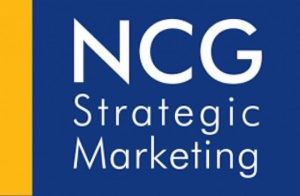Spring in Boulder means the end of ski season and the beginning of running season. Of course, the hard-core Boulderites have been running six times a week all winter long, but even in my younger days, I never had the sufficient commitment to running that was necessary to claim membership in that elite group.
So, for me, the vanishing of the ice and snow from the trails brings with it my annual fire drill to get in shape for the Bolder Boulder. For those of you unfamiliar with the BB, it’s one of the largest and most celebrated 10K’s in the world, with over 55,000 participants in 2009. The race takes place throughout downtown Boulder every Memorial Day, and it features live bands, dancing grannies or other entertainment on nearly every block. It finishes up at CU’s football stadium with a picnic for all, military jet flyovers and paragliders. It’s truly a blast.
And all that’s a good thing, unless you haven’t been running all winter long, which means that you have just six weeks from the last day of ski season to running a 10K in peak form. (And since this is Boulder, your peak form had better be good.)
At any rate, in my younger days, I was able to put together a few runs in April and May, and I’d be more or less ready for the Bolder Boulder. However, as I discovered last year – after an eight-year sabbatical – it’s not so easy anymore. Somehow, over the course of that time away, I had lost a minute off my pace, and that was on top of the time I’d lost over the previous several years.
This is when the acronym long used by computer programmers comes to mind: GIGO, or Garbage In, Garbage Out. When you’re over 40, a few training runs over the space of a few weeks will get you just that: very little return on very little effort. Meaning that even if your body was able to quickly overcome a certain slackness in your training schedule back in the day, those days are long over, and only a disciplined approach will help you find success post-40.
So, with just over five weeks to go, I’m working on executing that disciplined approach. This includes setting goals and executing a plan to reach those goals. Instead of just popping out for a couple of casual runs a week, I have a comprehensive program consisting of a mix of distance runs, tempo runs, interval training/speed work, hill work, diet and strength training, all of which are designed to work together to maximize my conditioning as quickly as possible.
And that’s where marketing comes to mind, because marketing for many law firms resembles my “preparation” for the Bolder Boulder in years gone by, in that it’s anything but strategic. Instead, law firm marketing is frequently unplanned and scattershot. If it feels good, do it. Why not sponsor a table at the event next month to support that good cause? Joe’s been asking you, and he’s been a friend for years. And shouldn’t we see what we can do on Twitter? It’s the big thing now in marketing, right? Oh, and let’s do those ads we do every year. Why? Well…because we’ve always done them, and they’re good ads…
Just as a scattershot approach may have worked well enough to get me a halfway-decent 10K time when I was 31, it also may have worked sufficiently well for a law firm’s marketing needs a decade ago – or perhaps it just didn’t matter, since there was plenty of work coming through the door anyway. But isn’t it remarkable how much has changed in the last few years? Scattershot just isn’t good enough anymore.
The legal marketplace today is as unforgiving as the over-40 body, and your firm’s marketing program needs much more attention than you gave it a few years ago. More thought, more strategy, more TLC. It needs clear thinking about your firm’s business model, its strengths and weaknesses, its differentiation strategy and its goals. Once you have that, you can start developing an integrated marketing plan that will do for your law firm’s bottom line what a comprehensive workout plan can do for your physical fitness.
Perhaps this marketing plan might include a business development program incorporating a focus on client retention with industry networking and public speaking. It could also include an email marketing program, a plan to incorporate direct mail into your marketing mix, and a social media strategy that’s an element of a broader public relations program. But at least as important as the individual elements of the plan is the integration of them into a cohesive whole and the process that’s developed to make it all happen.
And just like proper training for the Bolder Boulder, this needs to include tracking all appropriate metrics. What’s working and what’s not? Which elements of the plan need increased attention? Which ones are paying off, and which ones should be dropped? As has been said more than once, you can’t manage what you don’t measure.
So, what will I be able to do in the next five weeks? Hard to say for sure, but it will take a fair amount of work just to match my not-so-impressive time from last year. Whether I like it or not, that’s the new reality. What’s easy to see is that going forward, staying in shape will take a full-on, year-round commitment, just as does anything meaningful, such as managing your career or marketing your firm.
Shall we all promise to make that commitment for the next year?


